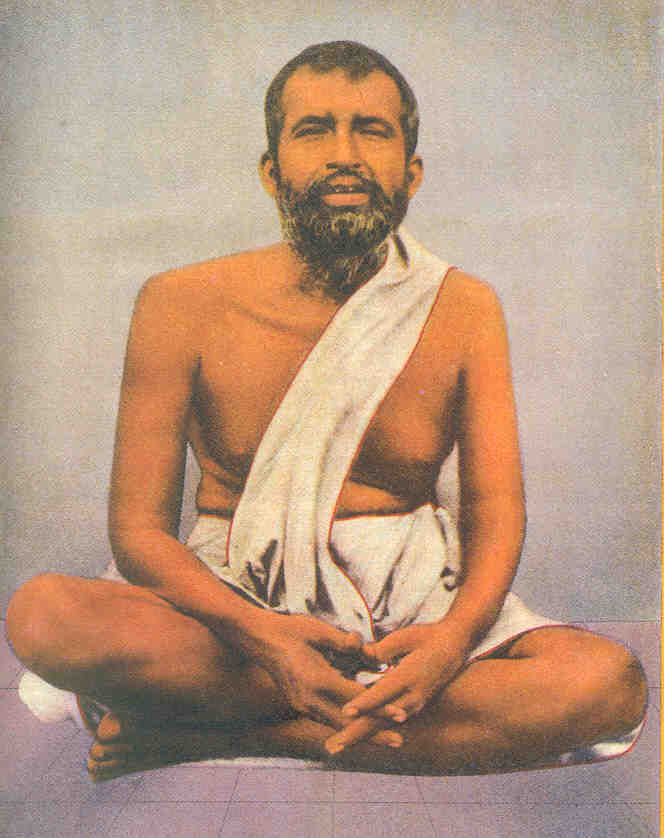10: The One Supreme Absolute Alone Is : 6.
The Teachings of the Bhagavadgita :
The Bhagavadgita accepts the Samkhya principles of the dualism of prakriti and purusha, with a great proviso that there is something beyond these two principles which are like the two wings of the bird of the Supreme Being, but the wings themselves are not the bird. We have a similar thought in Spinoza in the West, who had a notion of the Supreme Being by way of what we call substance, with two attributes of space and time. The attributes of Spinoza are something like the purusha and prakriti of the Samkhya according to the Mahabharata, the Manu Smirti and the Bhagavadgita – not Kapila's or Ishvarakrishna's Samkhya. There is a practical utility in taking for granted that there is such a thing called purusha and prakriti. Whether they are really there in the last word is a different matter, but they have to be taken as existent, like an 'x' in an equation; it is not there, but it must be there because it has utility. Human beings, who can think only in this manner and cannot think in any other way, cannot obviate their involvement in this concept of the duality of the seer and the seen, and we cannot jump over our own skin.
But the philosophy of the Bhagavadgita, or any profound philosophy for the matter of that, is a study of the implications of experience, and not merely a study of empirical experience. Empirical experience may tell us that there are two realities – prakriti and purusha – but the implication is something deeper. The very knowledge of the fact that there are two things shows that there is a third thing which is other than the two things; otherwise, no one can know that there are two things. Prakriti cannot know there is purusha, purusha cannot know that there is prakriti, if they are totally different. The possibility of the one knowing the other, or one contacting the other, is acceptable only on the presence of a larger ground to which a subtle hint is given when the Bhagavadgita tells us, "I am the Knower behind all the things," – which means to say, the consciousness behind the whole material universe. Consciousness is the Knower of the whole cosmos. There is a single Seer – 'The Beholder of the Universe' that is God, who is brooding over the waters of creation. We need not go further, deeper, into the difficulties that we may have to face, in going a step beyond this conclusion that we have arrived at, because if we press this feature of the omnipresence of consciousness as immanent in all creation to its logical limit, we will be forced to conclude that matter does not exist, because consciousness can be omnipresent only if the so-called material object is a part and parcel of the existence of consciousness itself. This is to go too far, and we need not to such an extent at the present moment.
The thirteenth chapter of the Bhagavadgita is thus: prakriti, purusha, viveka, kshetra, kshetrajna vibhaaga-yoga. This prakriti, this material – a metaphysical matter, we should say, not the ordinary matter of the carpenter, or the chemist, or the scientist as we know, the philosopher's matter – this matter is not a solid substance, but a constituent of forces, energies. There is no matter outside energy. This is what our science also says, and the Bhagavadgita says. These energies are called sattva, rajas and tamas. Sattva, rajas and tamas are not three substances. The idea of substance attacks us like a hobgoblin wherever we go; and whichever we try to contact in any manner whatsoever, the idea of solidity of objects and the externality of things is so hardboiled in us that we cannot understand how a mere force, an energy, can become a solid universe. The solidity of a substance is not the characteristic of the substance itself – it is a reaction set up by the contact of senses. Again we go back to that famous statement in the third chapter of the Bhagavadgita where it is said that the perception of the universe is nothing but the coming together, in contact with each other, of the constituents of the individual with the constituents of the cosmos – the gunas of prakriti colliding with the gunas of prakriti, an ocean of waves, dashing against one another, as it were, where there neither a seer or a seen, no subject or object. 'The Ocean of Being' is dancing within its own bosom!
Swami Krishnananda
To be continued ....
.jpg)


.jpg)

Comments
Post a Comment